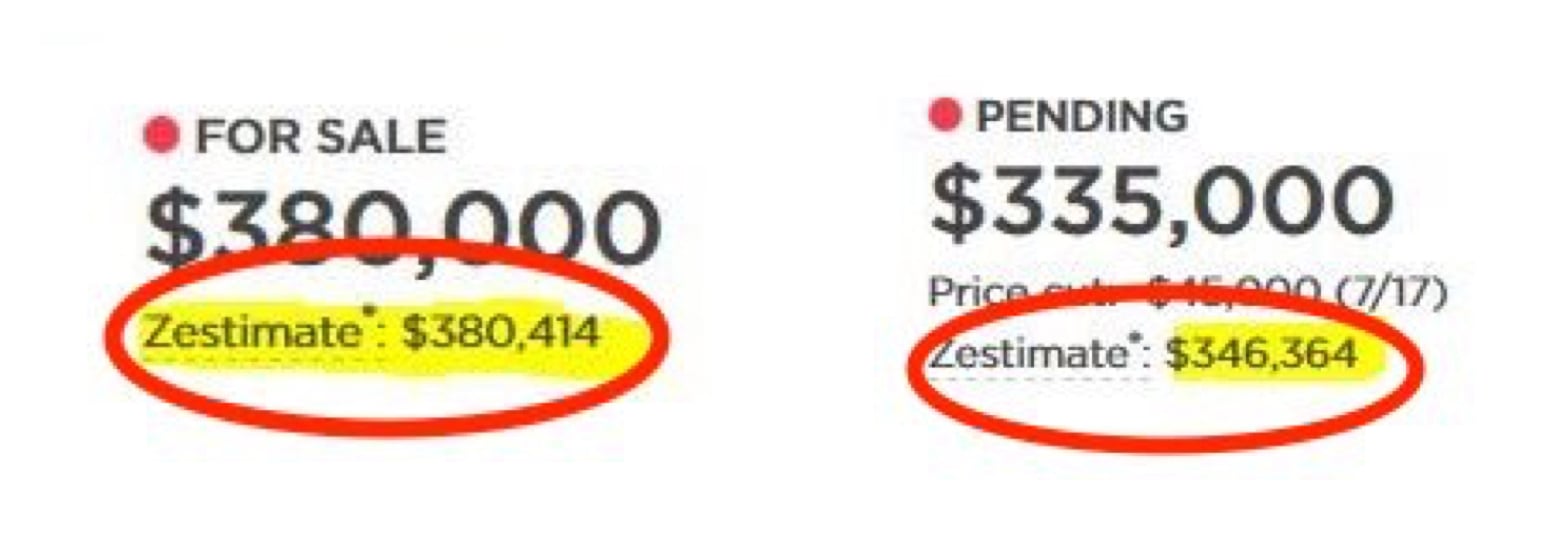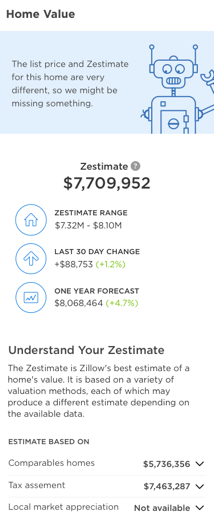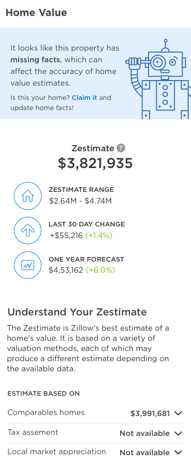Ryan Lundquist, a Sacramento-based appraiser, recently tweeted about a striking change to the Zestimate of a local property.
The single family home in Carmichael, California, was originally listed for $380,000 and valued by Zillow’s signature online estimate, the Zestimate, at $380,414. But when the home went under contract for $335,000, the Zestimate also dropped “right away” to $346,364, according to Lundquist.
“This makes me think Zillow’s algorithm gives huge weight to the actual list price,” he mused.
Interesting. This property was priced too high at $380,000 and Zillow’s estimate was at $380,414. The price was reduced to $335,000 and right away Zillow’s estimate changed to $346,364. This makes me think Zillow’s algorithm gives huge weight to the actual list price. Hmm… pic.twitter.com/jvL5CXJjN2
— Ryan Lundquist (@SacAppraiser) July 28, 2018
 It’s time to think like a CEO
Development programs need to meet the needs of agents as small business owners READ MORE
It’s time to think like a CEO
Development programs need to meet the needs of agents as small business owners READ MORE
In this case, Lundquist was at least partially right, Zillow recently told Inman.
Although Zillow has previously said Zestimates never factor in list prices so they can remain independent estimates of value, there are, in fact, cases where Zillow gleans information from the list price, or interprets from the list price a lack of information on Zillow’s part, which is then used to tweak the Zestimate, according to the company.

Detail view of Zillow’s Zestimate change on a property in Carmichael, California, annotations by Inman | Credit: Ryan Lundquist/Twitter
In addition, Zillow has also been experimenting with other ways to square Zestimates with list prices — such as by prominently warning visitors that a Zestimate may be inaccurate, or by wiping Zestimates from the top of property pages.
Some of these adjustments were introduced relatively recently, part of Zillow’s ongoing effort to provide consumers with transparency, said Emily Heffter, a spokeswoman for Zillow.
On the surface, there is no rhyme or reason to why Zestimates or their presentation on property pages respond to a list price for a home in one way, while responding to a list price for another home in a different way.
Heffter said that the adjustments depend on a “sliding scale,” but did not provide details on how the scale worked in practice, noting that the myriad “computer models and algorithm” that go into Zestimates are constantly changing.
She emphasized that these adjustments are rare because Zestimates rarely differ substantially from a home’s list price. And if a Zestimate updates after a home is listed, she added, that is typically because the Zestimate factors in new property data made available by the listing (e.g. square footage, waterfront views) — not the list price itself.
Nonetheless, here are three ways that Zillow can make adjustments when Zestimates and list prices do not come close to agreeing.
1. The Zestimate itself changes
In this situation, the one that Lundquist flagged, the actual Zestimate — not its presentation — will adjust based on list price. The Zestimate will appear at the top of the page next to the list price, as well as farther down in the customary section that provides context on the Zestimate.
“We do this when we think that the listing agent has information that we don’t,” Heffter said.
2. The Zestimate is removed from the top of the page
In other cases, Zillow merely adjusts the presentation or positioning of the Zestimate.
One approach taken by the company is to remove the Zestimate from the top of the page where it usually appears next to the list price, and only allow the Zestimate to appear in the section that contextualizes the Zestimate farther down the page.
Two warnings — each paired with a robot that is missing an arm — could appear within the section with Zestimate context.
A: “The list price and Zestimate for this home are very different, so we might be missing something.”
This warning can appear in the middle of property pages.
B: “It looks like this property has missing facts, which can affect the accuracy of home value estimates.” (Homeowners or listing agents have the option to click a link to “claim” the property and add missing facts.)
This warning can appear in the middle of property pages.
3. The Zestimate remains up top — with a warning
Here, the Zestimate doesn’t factor the list price into the actual Zestimate. Nor does it wipe the Zestimate from the top of the page.
It only tacks one of the two robot warnings onto the Zestimate, when it appears both up top and farther down the page.
Again, those warnings are:
A: “The list price and Zestimate for this home are very different, so we might be missing something.”
This warning can appear next to the list price at the top of a property page

This warning can appear in the middle of a property page.
B: “It looks like this property has missing facts, which can affect the accuracy of home value estimates.”
This warning can appear at the top of a listing page.

This warning can appear in the middle of a property page.
Zillow will never manually change a Zestimate in response to complaints about the valuation or its positioning, Heffter said.
“But if a complaint from anyone reveals a bug in the algorithm, and we learn about it, we would fix the bug for everyone,” she added.
Lundquist told Inman he thinks it’s logical for Zillow to sometimes adjust Zestimates or their display in response list prices.
At the same time, many of his clients take Zestimates too seriously, according to Lundquist.
They would be “wise to question a little further what Zillow says, and why Zillow says it,” he said.
Source: click here















